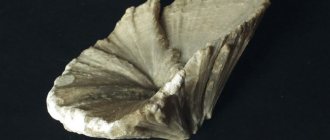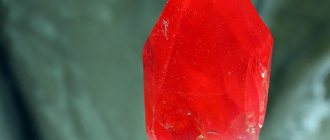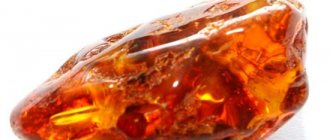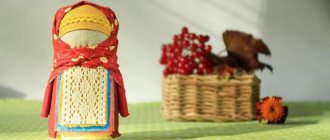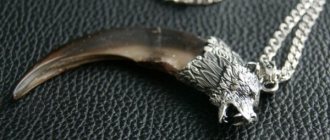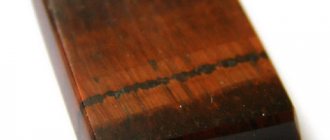What is mica
Mica is a group of minerals of volcanic origin or crystallized rock. These are soft silicates: a fingernail mark remains on the layer. Contains metals. In composition it is considered a relative of granite.
Modern classifiers indicate three types of mineral:
- lithium;
- iron-magnesium;
- aluminum.
They differ in color because they contain different metals and impurities. But they all have cleavage, layering, and flexibility of thin fragments.
Mica deposits are located in countries where there are hydrothermal conditions for the formation of silicates. The rock is mined open-pit or underground, or synthesized in production.
Artificially grown minerals have the same properties as natural stones.
In addition, see the review:
Modern breed classification
Industrial classifiers describe five types of mica. The first one is leafy. During mining, silicates are always separated into layers (flat or rolled up like flower petals). The remaining 4 types are waste and processed products.
During the processing of silicates, the following are formed:
- small-sized mica (small fragments of sheets);
- scrap (shards and other scrap minerals);
- intumescent or hydrolyzed mica (glauconite, hydrobiotite, vermiculite, hydromuscovite);
- powder (chalked waste).
Based on their chemical composition, there are three types of silicates. Aluminum (potassium-sodium) micas include paragonite and muscovite. The group of lithium species includes tainiolite, lepidolite, and zinnwaldite. Lepidomelane, phlogopite, and biotite are classified as iron-magnesium.
| Variety | Color |
| Sodium, or paragonite | Pearly shine, colorless or yellowish, whitish, light green. Sometimes there is a greenish tint |
| Black, or biotite | Translucent or opaque. Charcoal, faded green, bronze, dark brown, dark green with a brown tint |
| Light (potassium), or Muscovite | Transparent colorless or translucent white, silver. Comes with a pink, yellow or green tint |
| Potassium-lithium-iron, or zinnwaldite | Pearlescent shine. Gray-silver, black, brown (often confused with biotite) |
| Magnesian (amber), or phlogopite | Brown, yellow. Thin fragments are golden, red-brown. Rarely found pure transparent variety |
| Tainiolite (lithium) | Glassy luster, colorless or brown-green |
| Lithium, or lepidolite | Heterogeneous color, pearl or glass shine. Purple, lilac with a pink tint, grayish, cloudy whitish, dull yellow, violet with white edges |
| Iron, or lepidomelan | Black. In the classifications of the International Mineralogical Association (IMA) it is indicated as a synonym for biotite |
There are stones of non-classical colors. The most commonly found are gold and brick-red biotite. The first type in metallurgy and mining is called cat gold, golden mica. The second is called rubellan.
Interpretation of the concept
This group of minerals has perfect cleavage in one direction. They are capable of splitting into very thin hard plates, while maintaining elasticity, flexibility and strength.
Thus, we can conclude that mica is a mineral that visually resembles glass and has a structure of layered crystals. It is due to this feature, as well as due to the weak connection between individual packages of materials, that certain chemical properties are formed.
Regardless of the fact that there are many varieties of the mineral in question, it has common characteristics, such as:
- lamellarity;
- basal cleavage;
- the ability to split into the finest components.
History and origin of the mineral
Archaeologists have discovered the first use of mica in Upper Paleolithic rock art. The Aztecs added it to the paint for the wall paintings of the Pyramid of the Sun (Mexico, the ancient city of the gods Teotihuacan). From the 10th century they began to make glass for windows and lanterns. They are reminiscent of stained glass windows in Western Europe.
Mica in historically valuable products:
- window windows of the 12th century (Hermitage, museums of the Kremlin, Kolomenskoye, Pereslavl-Zalessky);
- Peter's cart;
- old icons;
- royal lamps;
- caskets for storing things and papers (Ustyug masters of milled iron).
It is interesting that the name of the lamellar stone comes from the Vologda word “sluda” (now - layer, confirmed in Dahl’s explanatory dictionary). In the Middle Ages, Europeans called mica muscovite, Muscovy crystal/glass, since the mineral was mined in territories that belonged to Muscovy.
Interesting facts of the past include the price of layered stone. One pound of the mineral (about 16.4 kg) cost more than 16 rubles. This is four times more expensive than one high-yielding cow. The poor used it not on windows, but instead of glass in a candle cap. The price dropped at the end of the 20th century due to the synthesis of the stone.
Literature
- Dubovik M. M. Libman E. P.
Two lives of a wonderful stone: From the history of the mica industry in Russia. - M. Nedra, 1966. - 188 p. — 6,000 copies.
This abstract is based on an article from Russian Wikipedia. Synchronization completed 07/09/11 15:28:54
Related abstracts: Mica-muscovite. Mica (Murmansk region).
See what “mica” is in other dictionaries:
MICA - female or Sluda, Vologda. (from layer) layered, in its pure form, like glass, a transparent fossil that is used instead of glass, for example. in lanterns, etc. Mica windows. Mica slate. Mica and micaceous fossil containing mica; |... ... Dahl's Explanatory Dictionary
MICA - (mica obsolete), mica, plural. (special) mica, mica, women. A transparent mineral of complex composition, colorless or yellow in color, usually layered, widely used in various branches of technology. “With a window made of mica, low, without a pipe, it was ours... ... Ushakov’s Explanatory Dictionary
MICA - MICA, s, female. Transparent layered mineral. | adj. mica, oh, oh. Mica vein. Mica window (in the old days: with mica plates inserted into the frames). Ozhegov's explanatory dictionary. S.I. Ozhegov, N.Yu. Shvedova. 1949 1992 ... Ozhegov's Explanatory Dictionary
Mica - (technical) In technology, mica is used mainly as a very good insulator of electricity, which does not lose its properties when heated even before hardening. Due to the softness and flexibility of mica sheets, they can be cut with scissors and using... ... Encyclopedia of Brockhaus and Efron
mica - mica, kind. mica; pl. mica, kind. mica and obsolete mica, gen. mica ... Dictionary of difficulties of pronunciation and stress in modern Russian
Mica is the general name for a broad class of aluminosilicate minerals of the phyllosilicate family. Most types of mica crystallize in a monoclinic system and are characterized by almost perfect splitting of the crystal along the main axis, which ... ... Encyclopedia of terms, definitions and explanations of building materials
mica - dial. sludinka, sludya - the same, Olonetsk. (Kulik.), Bulgarian mica - the same, Czech. slida, slvts. sl᾽uda, slieda. Czech borrowed word from Russian according to Golub-Kopechny (337). They assume kinship with the servants (see) (Mladenov (592), Transfiguration (II, 332)).... ... Etymological Dictionary of the Russian Language by Max Vasmer
mica - mica, s, y; plural (special) mica, mica, mica ... Russian verbal stress
Mica - f. A transparent layered mineral of complex composition, widely used in technology. Ephraim's explanatory dictionary. T. F. Efremova. 2000 ... Modern explanatory dictionary of the Russian language by Efremova
mica - mica, mica, mica, mica, mica, mica, mica, mica, mica, mica, mica, mica, mica (Source: “Complete accentuated paradigm according to A. A. Zaliznyak”) ... Forms of words
Mica is a natural material that looks like uneven shards of transparent or colored glass. The term “mica” refers to several minerals that are similar in composition and type. They can be red, brown, green, black or yellow in color depending on what elements formed the mica.
Mica is a weak material. It has a layered structure, that is, a piece of mineral consists of many thin layers that are easy to break into pieces without the use of tools. The mica layers are quite brittle, but can bend slightly.
Mica is formed in the crater of a volcano. When hot and molten lava begins to cool after an eruption, high pressure, heat and the presence of water sometimes lead to the appearance of entire layers of mineral in the solidifying mass.
Most often, mica is mined in mines. To do this, special machines are used to dig deep underground passages to the place where mica deposits are discovered. Sometimes mica is also mined in an open way - from deep pits - quarries.
Mica is not as transparent as glass. But because mica can transmit sunlight, rich people inserted it into windows at a time when people did not yet know how to make glass. Nowadays, mica is valued for its fire-resistant and heat-insulating properties. In addition, mica, crushed to a powder, is added to decorative paints for various surfaces and even decorative cosmetics. This gives paint and cosmetics a vibrant shine and shine.
November 11, 2014
Mica is found in natural mineral formations in the earth's crust. It is a rock of volcanic origin that was formed during the cooling of molten lava. It is also worth noting that mica is an excellent insulator that does not conduct electricity or heat.
Deposits and methods of stone extraction
There are large deposits of mica in Namibia, Madagascar, USA, India, Canada, Brazil and Russia. Domestic deposits are located in Karelia, Yakutia, Irkutsk and Murmansk regions, Transbaikalia, the Kola Peninsula, and Taimyr.
The mineral at a depth of less than 100 m is mined using the open-pit (quarry) method. The mica rock is blasted or drilled, and quality sheets are selected by hand. Deposits at a depth of no more than 4000 m are obtained using a closed (mine) method. They make underground passages to the deposit, excavate the vein, loosen it with a drill or dynamite, and select stones by hand or with shovels.
In production, mica is synthesized - fluorphlogopite. Crystals are artificially grown from the same substances that are found in the natural mineral, and one chemical element is replaced by fluorine. They are grown at a temperature of 1400 ºC with a gradual decrease to 1200 ºC.
Synthetic mica is small-sized, dielectric, fire-resistant, and free of defects. It is suitable for small products, powder.
To watch a video from the blog about mining interesting stones:
What rock does this mineral contain?
Granite is a stone in which mica has been found in large quantities. It is one of the most common crystalline natural mineral aggregates. Stone is traditionally used in the construction field.
The word “granite” comes from the Latin “granum9raquo;”, which translates as “grain”. This stone has been widely used by architects and designers for several hundred years due to the fact that it has such unique qualities as mechanical strength, durability and frost resistance, which are ideally combined with its decorative properties.
The pleasant appearance of granite is suitable for both external cladding of objects - the construction of embankments or the creation of monuments, and for internal cladding (various decorative elements).
It contains quartz and feldspar, mica and other minerals. Their ratio affects the color and strength of the stone.
How to spot a fake
In order not to be deceived by the naturalness of mica (especially powder), sellers are asked to show certificates of conformity and quality of the mineral. Without the help of a gemologist or jeweler, it is almost impossible to distinguish between natural, synthetic and fake stones.
Natural mica plates can:
- bend at an angle of 90º;
- scratch with a fingernail;
- do not melt in the candle fire;
- be of uneven color;
- crack when compressed with a vice;
- contain inclusions of other minerals;
- be wavy, with voids and cracks inside.
Water is considered the most harmless home test method. The mineral is sprayed with water. The naturalness of mica is confirmed by drops that retain a hemispherical shape for more than 30 seconds and do not spread over the surface.
Varieties
There are various types and subspecies of this mineral. Approximately 90% of world production comes from muscovite, which is used industrially. The remaining 10% are other types, including jewelry.
- Muscovite is an aluminosilicate of potassium and aluminum with hydroxyl. This variety is more common than others and can form other breeds. Muscovite plates are colorless or white, translucent. Muscovite can form large plates, which is convenient for production purposes.
- Biotite is always opaque because it contains iron ions. Its color varies from brown to black.
- Phlogopite is the second most common mineral after muscovite. It is rarely colorless, most often it has a yellowish, sometimes golden color, which is why it resembles autumn foliage. Phlogopite is one of the few micas used in jewelry.
- Lipedolite is similar in color and shape to flowers. Its plates are most often colored pink or purple, curved and arranged in rosettes. Lipedolite contains lithium, so no matter what the color of the plate, if you look at the flame through it, it will appear red.
Let us separately highlight vermiculite and fuchsite. The first refers to hydrated micas. The interlayers of the plates contain water, so when heated, the mineral swells, forming columns that look like worms.
Fuchsite is a variety of muscovite. It contains chromium impurities, which turns it green. It forms dense scaly masses. Due to its bright shine, unusual pattern and pleasant color, it has become an ornamental stone. Balls and small figures are cut out of fuchsite stone, and beads are made. Fuchsite resembles aventurine or agate. This is a rare type of muscovite; it is mined in small quantities in the Urals, Karelia, Canada, and on the island of Tasmania.
Properties and applications of mica
The mineral is used in mechanical engineering, the chemical industry, agriculture, animal husbandry, the production of furniture, interior and household items, and construction. It is also used in medicine and cosmetology.
In industry, mica is used to make:
- insulation for wires;
- insulation for radio electronics elements, ships, aircraft, microwave ovens and other household appliances;
- plates for navigation equipment, optics, heating equipment;
- thermal insulation building materials (expanded mica);
- mixtures for the production of rubber, paint, plastic, synthetics;
- additives for cement mixtures;
- fillers for paints and varnishes;
- decorative inserts for furniture, boxes, wall and other products;
- wallpaper covering;
- hydrothermal plates for water boilers;
- mica paper (gaskets).
In everyday life, recycled layered stone is used for plants, animals, and creativity. Farmers, flower growers, gardeners and gardeners use the mineral to improve the composition of the soil, mulch the soil (cover it with a protective layer), and add fertilizer to preserve moisture. Livestock breeders use litter for trays (toilet) and warm mica bedding.
A mica plate is used to repair a microwave oven. It is used to separate (isolate) the waveguide from the wall of the equipment.
In creative products, mica sparkles are added to liquid glue (glitter), pearlescent paints, powders, and coating for decorative paper. It is often used to decorate or restore New Year's toys and decorate boxes. Solid products are not made from mica, since the mineral exfoliates.
In the beauty industry, mica powder is added to decorative cosmetics. Shining blush, eye shadow, lipstick, dry toner, powder, jewelry or nail polish are made with the mineral. In folk medicine they are used to treat. The mineral is used in the manufacture of medical equipment.
View this post on Instagram
Publication from Irina (@nail_stepanyuk) July 18, 2021 at 8:56 PDT
View this post on Instagram
Publication from Pigments and Cosmetics Ukraine? (@evs.makeup_) Jul 15, 2021 at 2:25 PDT
Physical and chemical properties
The chemical characteristics of Muscovite differ: the mineral is found only in acidic rocks. Biotite has unique physical properties. It and its varieties are the only opaque representatives of the group.
Chemical formulas of different types:
| View | Name | Formula |
| Aluminum | Muscovite | KAl2[AISi3O10](OH)2 |
| Paragonite | NaAl2[AISi3O10](OH)2 | |
| Lithium | Tainiolite | KLiMg2[Si4O10](OH, F)2 |
| Zinnwaldite | KLiFeAl[AISi3O10](OH, F)2 | |
| Lepidolite | KLi2-xAl1+x[Al2xSi4-2xO10](OH, F)2 | |
| Iron-magnesia | Phlogopite | KMg3[AISi3O10](OH, F)2 |
| Lepidomelan | KFe3[AlSi3O10](OH, F)2 | |
| Biotite | K (Mg, Fe)3[AISi3O10](OH, F)2 |
Mica breaks down in concentrated acids after fusion. Dampness or moisture destroys minerals. But silicates are resistant to heat. Muscovite has a minimum heat resistance of 400 ºC. Phlogopites can withstand temperatures of at least 200 ºC.
The density of mica minerals does not exceed 2.9 g/cm3:
- iron-magnesium – from 2.3;
- aluminum – from 2.6;
- lithium - 2.84.
Mica is divided into thin flexible plates, wedges, and flakes. They are transparent in the light. The shade may differ from the color of a thick piece of mineral. Silicates are fragile - they can withstand no more than 3 kg of pressure per 1 m3. Hardness is 3 points. The plates are uneven at the fracture.
Mica minerals have perfect cleavage. There is no water absorption or porosity. After grinding colored or transparent mica, a gray or white streak (powder) is obtained. The specific gravity varies between 2.6–3.2 kg/m3.
View this post on Instagram
Posted by Alexander (@orbun89) Jul 19, 2021 at 8:41 am PDT
Medicinal properties
In Ayurveda, only black mica was used. In ancient times, it was calcined many times inside cow dung, but now electric ovens are used. To activate the healing properties, the layers were heated and cooled at least 200 times. Afterwards it was ground into powder.
Mica powder was sprinkled on acne and skin lesions. Taken internally for infectious or gastrointestinal diseases.
Mica jewelry is worn to prevent endocrine and joint diseases.
Doctors do not recommend treatment with mineral alone. This therapy is not effective and can cause complications. Cosmeceuticals are allowed to be used.
Colored mica can be safely used in chromotherapy. Contemplation of a stone acts on a subconscious level. The color of the mineral triggers regeneration, improves metabolism, and normalizes the psycho-emotional state. The main thing is to choose the right color and follow the recommendations of your doctor.
Magical properties of mica
The shine of green or gold mica attracts money, profitable deals, and other material benefits. It is advisable to keep a stone or inlaid object on the work table. The mineral will help the owner become purposeful, eloquent, insightful, and strengthen intuition.
The magic of mica color:
- golden - a talisman in your wallet will attract profit;
- white - in winter, an amulet in your pocket will not allow you to freeze, frostbite your fingers and face;
- silver, pearl - will protect you from failures and ill-wishers;
- pink - will improve family relationships and attract love;
- yellow, brown - will help you achieve success in any field;
- any color - will help you avoid danger and protect from violence.
The mineral is compatible with any name.
Astrologers do not recommend using mica for Scorpios and Libra. At best, it will be neutral (can be worn as jewelry). At worst, it will negatively affect the character of the owner.
Aries, Leo, Taurus, Pisces, Virgo, Gemini, Capricorn, Cancer, Aquarius are compatible with mica by 3 points on a 5-point scale. The influence of the stone on Sagittarius is ambiguous (1 point). He may make the situation worse or better, or he will remain inactive.
Physico-chemical characteristics
Mica is a whole family of minerals with a general formula. But each has its own melting point, density and other characteristics.
General formula: X+Y23+[AlSi3O10](OH, F)2 , less often X+Y32+[AlSi3O10](OH, F)2 , where X is mainly K, less often Na, NH4, Y is usually Mg, Fe, Al, less commonly Ba, Mn, Ca, Ti, Zn, B, V, UO2.
According to chemical nomenclature, it is an aluminosilicate (like, for example, feldspar).
Are there jewelry with mica?
Mica is used to decorate not only figurines, boxes, floor lamps or other interior and household items. It is used for the restoration of products made from expensive wood and ivory. Jewelers create beads, earrings, and pendants with the mineral. But masters call stone differently.
The most commonly used varieties of muscovite are:
- roscoelite (red, black, brown, green);
- fuchsite (bright green);
- sericite (white, silver);
- gilbertite (light green).
They are not available in jewelry stores. Jewelry can be ordered or found from folk craftsmen. They are sold online and at crafts fairs. Products are short-lived and easily damaged.
How to care for a mineral
Products made from mica are quite fragile, so they must be protected from impacts and friction. It is better to store jewelry in separate boxes with a soft backing. Do not get it wet or leave it in the bath or damp places. To remove dirt, wipe with a damp cloth and immediately blot with a paper napkin. Dust is brushed off with a synthetic broom.
Popular message topics
- Eucalyptus tree
The title of one of the tallest trees in the world belongs to the eucalyptus tree. It can compete with Lebanese cedar and sequoia. The widest variety of its species is found in Australia. - The city of Komsomolsk-on-Amur
What a wonderful name of the city - Komsomolsk-on-Amur. Probably everyone, when they hear about it, is delighted with the unusual sound and writing. This city is located in the Khabarovsk region and, like St. Petersburg, it was built on a swamp. - Donkey (description of what it eats, where it lives)
Domestic donkey, or as it is otherwise called a donkey. Since ancient times, it has been used as labor in economic life. It is still used as a means of transportation in many third world countries,
Breed cost
In past centuries, the price of mica was in the range of 15–150 rubles. The cost increased with the underground mining method and depended on the rarity of the mineral and the distance between the buyer and the deposit.
Now the same criteria influence the price. Mica slate is sold from 100 rubles per stone. Collectible pieces start at $100. The price of the powder varies from 20 to 300 rubles per package.
Jewelry and products are priced in euros. Depending on the complexity of the work, they can be purchased for 5–6000 euros.
The mineral is valued by magicians, cosmetologists, manicurists, color therapy doctors, and folk craftsmen. Quite accessible in terms of availability and price.
What uses have you seen for mica? Share interesting facts, ask questions, comment and distribute the article on social networks. All the best.
History of the use of mica in industrial areas
The first cases of the use of this mineral, mainly instead of window glass, were attested in Novgorod (X-XII centuries) during the period of development of the riches of Karelia and the Kola Peninsula in this territory. Then Ivan the Terrible conquered Novgorod and Pskov, which contributed to the acquaintance of the Moscow rulers with mica.
At the beginning of the seventeenth century, the mica industry was already quite widely developed in Karelia. According to official data, by the beginning of 1608 there was a Decree of the Moscow government regarding the collection of taxes from the mined mineral in the amount of one tenth of the total volume.
The development and exploration of Siberia led in the 17th century to new discoveries of mica deposits. Its presence was attested by Vladimir Atlasov in 1683 on Aldan. These deposits were subsequently forgotten, and only two hundred and fifty years later (on the eve of the Great Patriotic War) were rediscovered. At that time, the exploitation of mica began primarily for the needs of the country's defense.
Medicinal properties
Muscovite is a component of many types of clays that are successfully used in cosmetology and dermatology. It has a beneficial effect on the skin, curing it from peeling, itching, lichen and dermatosis. The mineral is able to get rid of teenage acne and pimples, relieve inflammatory processes, restoring freshness and beauty to the skin.
The stone has a positive effect on the human endocrine system. For patients with an enlarged thyroid gland and unstable hormonal levels, lithotherapists recommend wearing a bracelet with muscovite. Back to contents
